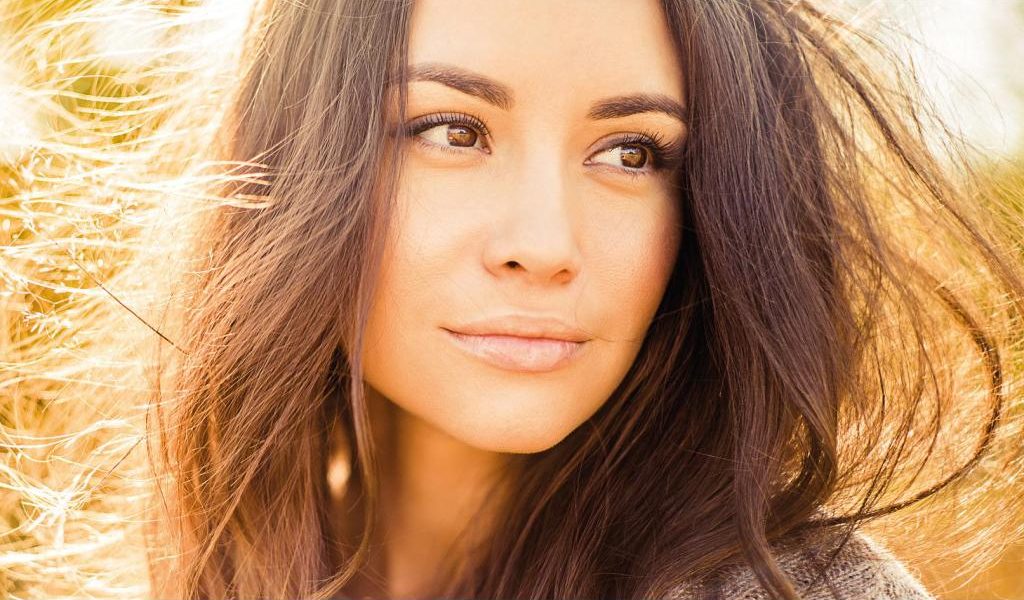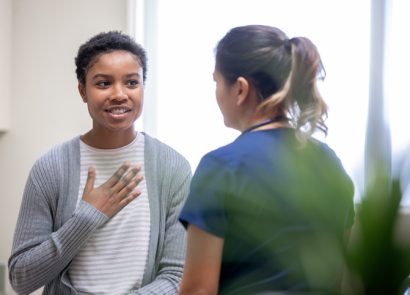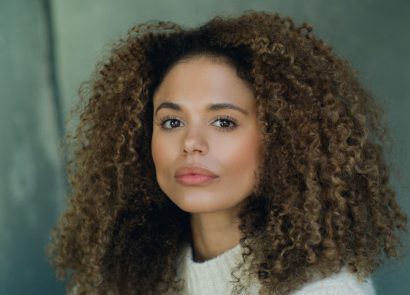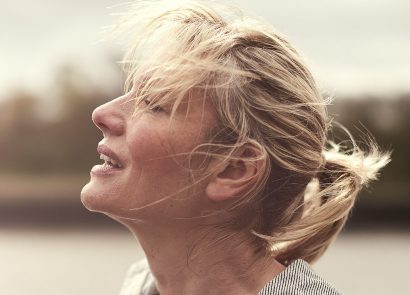Various studies show that women are more concerned with their hair thinning than they are any other age-related change in their appearance. I can completely understand why. The odd line and wrinkle adds character to your face. Laughter lines, for example, suggest that you’re a happy person and enjoy a laugh. But thinning hair doesn’t add anything to your character – in fact, it can do quite the opposite and make you feel bad.
In reality, women start to lose a little hair density from around the age of 20, though they might not notice it until 40 or so. Sebum production starts to take a nosedive, which results in dry and unruly hair. Essentially, aged hair becomes thinner, drier and less elastic, and the diameter of each individual strand can decrease until the follicle stops producing hair altogether. Oestrogen levels begin to drop off with the onset of menopause, and androgens – or male hormones – can climb, which can lead to further thinning on the top and at the front of the scalp. Sorry to be the bearer of bad news.
Haircare in a bottle
There is news to get majorly excited about, though. The big beauty brands, who traditionally have spent staggeringly huge sums of money on skincare research at the expense of haircare, are now redirecting their cash. It has come to light over the last few years that a lot of the powerful active ingredients in skincare can actually have a big benefit on hair, too. This is why the ‘care’ category is looking better than ever, and you can really expect great results from your haircare products. Look for shampoos, masks and intensive treatments containing panthenol, niacinamide (also known as vitamin B3) and caffeine, which have been shown to penetrate hair follicles and increase hair diameter. The increase is only a matter of microns but when that is seen over the entire head it can make a huge difference.
Minoxidil is currently the only FDA-approved treatment for hair growth (other supplements can contribute to your overall health and so make you less likely to lose hair). You can find it in Regaine or Rogaine, depending on where you are in the world. Though it’s important to note that it doesn’t work for everyone, and if you do see an improvement with it, your hair will go back to normal if you stop using it. But remember, not all hair loss is down to ageing. If it coincides with acne or increased facial and body hair then you should see your doctor or health practitioner to get to the bottom of it.
Change for the better
As for your style, it’s easy to get weighed down with a ‘signature’ hairstyle as you get older but, in my opinion, you should embrace the changes your hair is going through and change up your style too. Dame Helen Mirren is a fabulous example of someone who doesn’t allow her age to influence her styling choices. I have had the privilege to work with her on a few occasions, even once on a cover for Allure magazine, and I am in awe of her eagerness to experiment; her bright pastel-pink dye job (inspired by America’s Next Top Model) that she debuted at the BAFTAs a few years back remains a favourite.
If your hairdresser asks your age, then chances are they are cutting your hair with some preconceived idea of what ‘older’ women should look like and that usually translates into something short and generic-looking. If that’s the case, perhaps now is a good time to change your stylist too. No doubt your style has changed over the years, your fashion tastes will have evolved, the way you wear your make-up is likely different too, and it makes sense that your hair is part of this gradual transformation. But more important than all of this is how your hair makes you feel – if it’s not helping you to feel confident and you don’t feel that it accurately represents your personality then it is time for a change.
Greying gracefully
Never before has grey hair been so wonderfully celebrated as it is right now – it’s on the catwalk, on TV and in our magazines and newspapers. More women than ever are making the bold decision to stop dyeing altogether and embrace grey, and the results couldn’t be more beautiful. It’s a testament to great influential grey-haired women, including models Kristen McMenamy and Maye Musk, British Vogue’s Sarah Harris, and Christine Lagarde, who is the director of the International Monetary Fund, that women who don’t even have any grey hairs yet are faking the shade with dye.
I don’t know if we’ll really understand why hair goes grey for some time yet but it’s not unusual for most women to have a few renegade strands by the time they’re 30 (or even younger as the case can be). By the time women reach the age of 50, usually around half their hair will be grey. Contrary to what most people think, grey hair isn’t actually a colour, it is in fact a combination of normal pigmented hair and hair that has lost its pigment entirely, making it appear white. If you have an entire head of grey this means that you have lost the pigment from every single strand of hair. People often think that dark-haired women turn grey earlier than their fairer counterparts – actually this is just down to the white strands being more noticeable against darker hair than against paler types. Also, you can forget the old wives’ tale that if you pluck out a grey hair two more will grow in its place – it’s nonsense.
The age that you’ll turn grey is a tricky thing to predict but genetics play a huge role in its onset – if either of your parents went grey at an early age it’s safe to assume that you will too. Hormones, illness, stress, and physical and emotional traumas have also been linked to going grey early.
A grey area
If you don’t like your newly grey hair there’s not really much you can do about it, and although occasionally the rumour-mill goes into overdrive with speculation that some major brand or other is about to launch the antidote to greying, such a product has yet to materialise. Other studies suggest that taking large doses of certain B vitamins can start the reversal process but there is much more research needed before we’ll know for certain. Until then, we’ll have to make do with the magic that is hair dye.
It’s a common misconception that hair becomes coarse as it goes grey – actually, it’s more likely to become thinner and drier because it’s probable that you’ll also be producing less sebum than before. Look after your grey hair much in the same way as you did before – you can colour it and perm it just as you once did. Perms and smoking can occasionally turn grey hair slightly yellow but this can be corrected with blue- and purple-based shampoos, which will neutralise the brassiness.
If you’re ready to put down the dye and embrace your new colouring I suggest waiting until all of your hair is grey in tone. Even with the best intentions, patches of grey here and there is never a good look in my book. Maintain your bottle colour until you’re ready for the big reveal.
Extracted from Great Hair Days & How to Have them by Luke Hersheson (£20, Ebury Press). Foreword by Victoria Beckham. Intro by Sali Hughes.





















